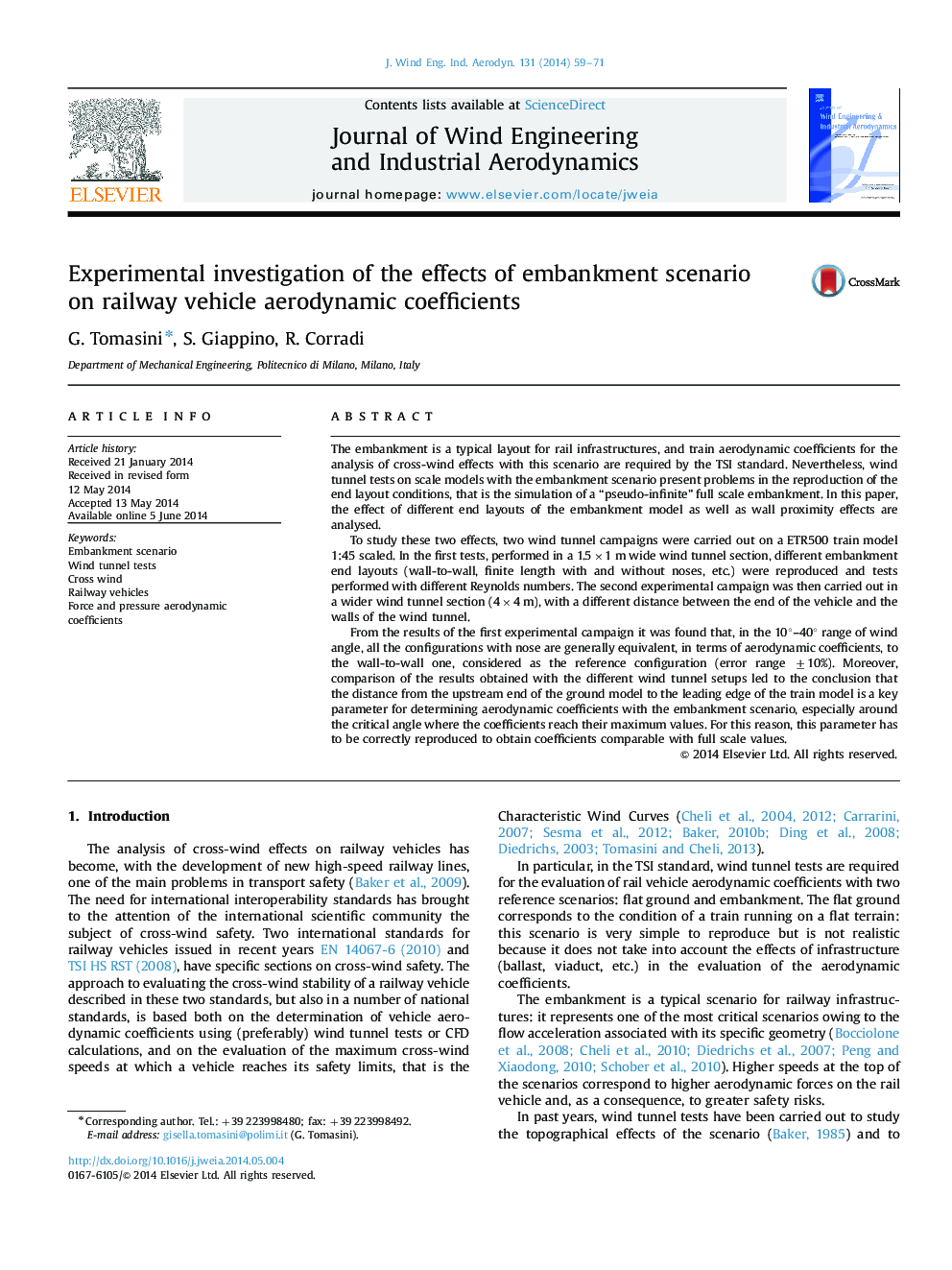| کد مقاله | کد نشریه | سال انتشار | مقاله انگلیسی | نسخه تمام متن |
|---|---|---|---|---|
| 293501 | 511142 | 2014 | 13 صفحه PDF | دانلود رایگان |
• A critical analysis of the requirements needed for wind tunnel tests with embankment scenario is presented.
• Different embankment end-layouts as well as wall proximity effects are studied.
• Distance from the embankment upstream end to the leading edge of the train model is a key parameter for determining aerodynamic coefficients.
• The maximum coefficients angle (critical angle) is sensitive to the configuration set-up.
The embankment is a typical layout for rail infrastructures, and train aerodynamic coefficients for the analysis of cross-wind effects with this scenario are required by the TSI standard. Nevertheless, wind tunnel tests on scale models with the embankment scenario present problems in the reproduction of the end layout conditions, that is the simulation of a “pseudo-infinite” full scale embankment. In this paper, the effect of different end layouts of the embankment model as well as wall proximity effects are analysed.To study these two effects, two wind tunnel campaigns were carried out on a ETR500 train model 1:45 scaled. In the first tests, performed in a 1.5×1 m wide wind tunnel section, different embankment end layouts (wall-to-wall, finite length with and without noses, etc.) were reproduced and tests performed with different Reynolds numbers. The second experimental campaign was then carried out in a wider wind tunnel section (4×4 m), with a different distance between the end of the vehicle and the walls of the wind tunnel.From the results of the first experimental campaign it was found that, in the 10°–40° range of wind angle, all the configurations with nose are generally equivalent, in terms of aerodynamic coefficients, to the wall-to-wall one, considered as the reference configuration (error range ±10%). Moreover, comparison of the results obtained with the different wind tunnel setups led to the conclusion that the distance from the upstream end of the ground model to the leading edge of the train model is a key parameter for determining aerodynamic coefficients with the embankment scenario, especially around the critical angle where the coefficients reach their maximum values. For this reason, this parameter has to be correctly reproduced to obtain coefficients comparable with full scale values.
Journal: Journal of Wind Engineering and Industrial Aerodynamics - Volume 131, August 2014, Pages 59–71
